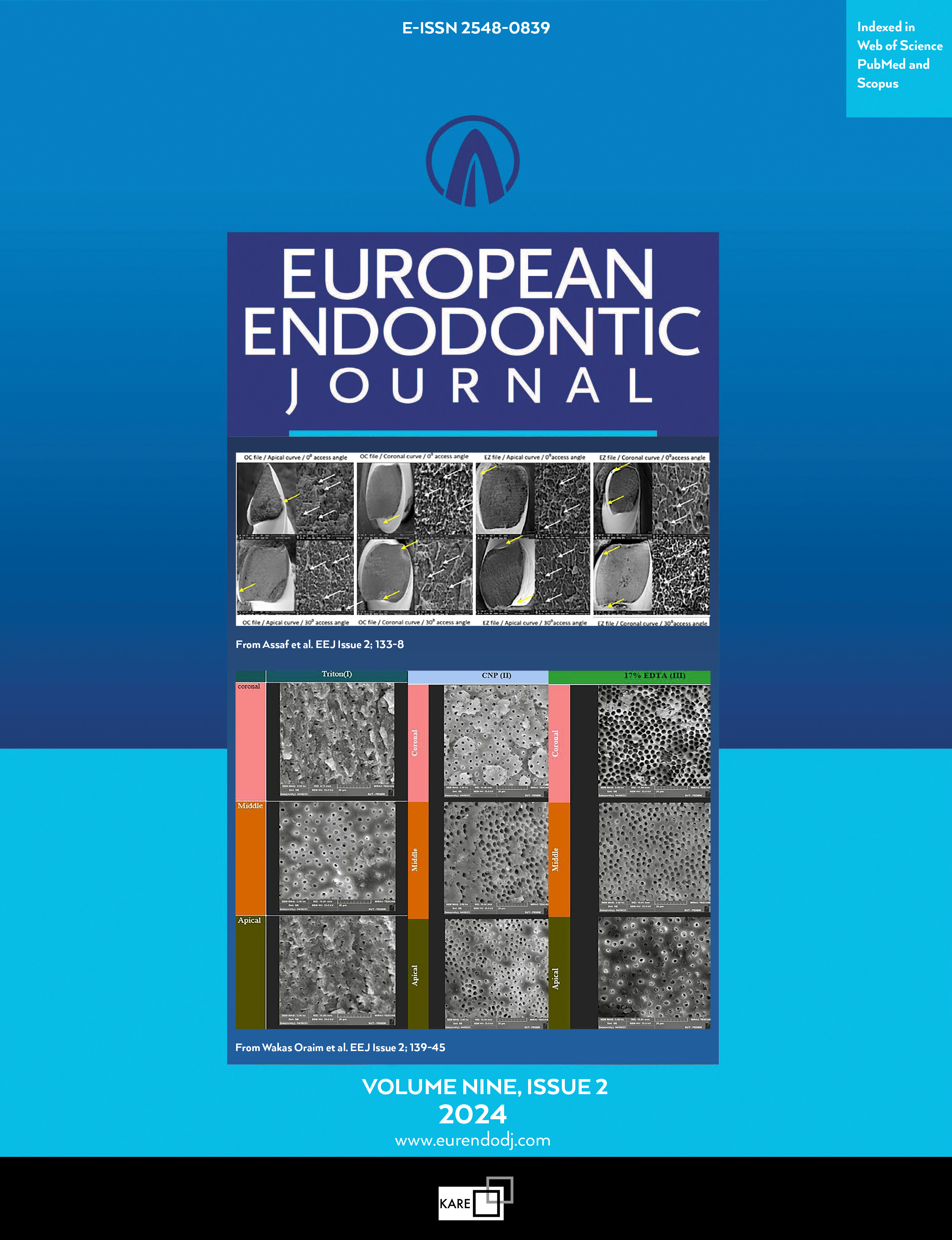Metrics
2023 IMPACT FACTOR
5 year Impact Factor
Eigenfactor
2023 CiteScore
Journal Citation Reports (Clarivate, 2024)(Dentistry, Oral Surgery & Medicine (Science))
Possible Causes for Failure of Endodontic Surgery A Retrospective Series of 20 Resurgery Cases
Frank Setzer, Meghan Harley, Julia Cheung, Bekir KarabucakDepartment of Endodontics, School of Dental Medicine, University of Pennsylvania, Philadelphia, USAObjective: This study aimed to evaluate unsuccessful endodontic surgery cases for possible causes for treatment failure and evaluate if a nonsurgical retreatment (NSRTX) approach could have been a better alternative to resurgery.
Methods: Analyses of clinical and cone-beam computed tomography (CBCT) images, periapical radiographs, and chart documentation determined study parameters. Preoperative factors were age, sex, tooth type, signs and/or symptoms, presence of periapical radiolucency, previous root canal treatment, timeline since previous endodontic surgery, presence of posts, cores, and restorations. The intra-operative factors were microsurgical classification, previous techniques, and current techniques utilized. Postoperative factors were signs and/or symptoms, time to follow-up, and healing status. The accessibility of the root canal system and the quality of the existing root filling were used to evaluate NSRTX as an alternative to resurgery.
Results: A total of 1073 surgical cases from 2011-2019 were reviewed. In 14 patients, 20 cases matched the inclusion criteria and allowed for data extraction. The mean time since the previous surgery was 2.9±2.1 years, with a mean follow-up of 9.1±5.8 months after the resurgery. Possible reasons for failure identified were: insufficient root-end filling (leaking, off-axis preparation, lack of depth, overfill) n=12/20, 60.0%; missed anatomy (main and lateral canals, isthmus) n=9/20, 45.0%; incomplete resection n=6/20, 30.0%. In 18/20 cases (90.0%), resurgery appeared to be indicated for 2/20 cases (10.0%). Therefore, NSRTX may have been a potential alternative.
Conclusion: Further evidence for possible causes of failure of endodontic surgery was provided, which were primarily iatrogenic. The evaluation of CBCT and high magnification intra-operative images proved beneficial for identifying critical issues for all investigated cases. (EEJ-2021-02-022)
Corresponding Author: Frank Setzer
Manuscript Language: English
(724 downloaded)


